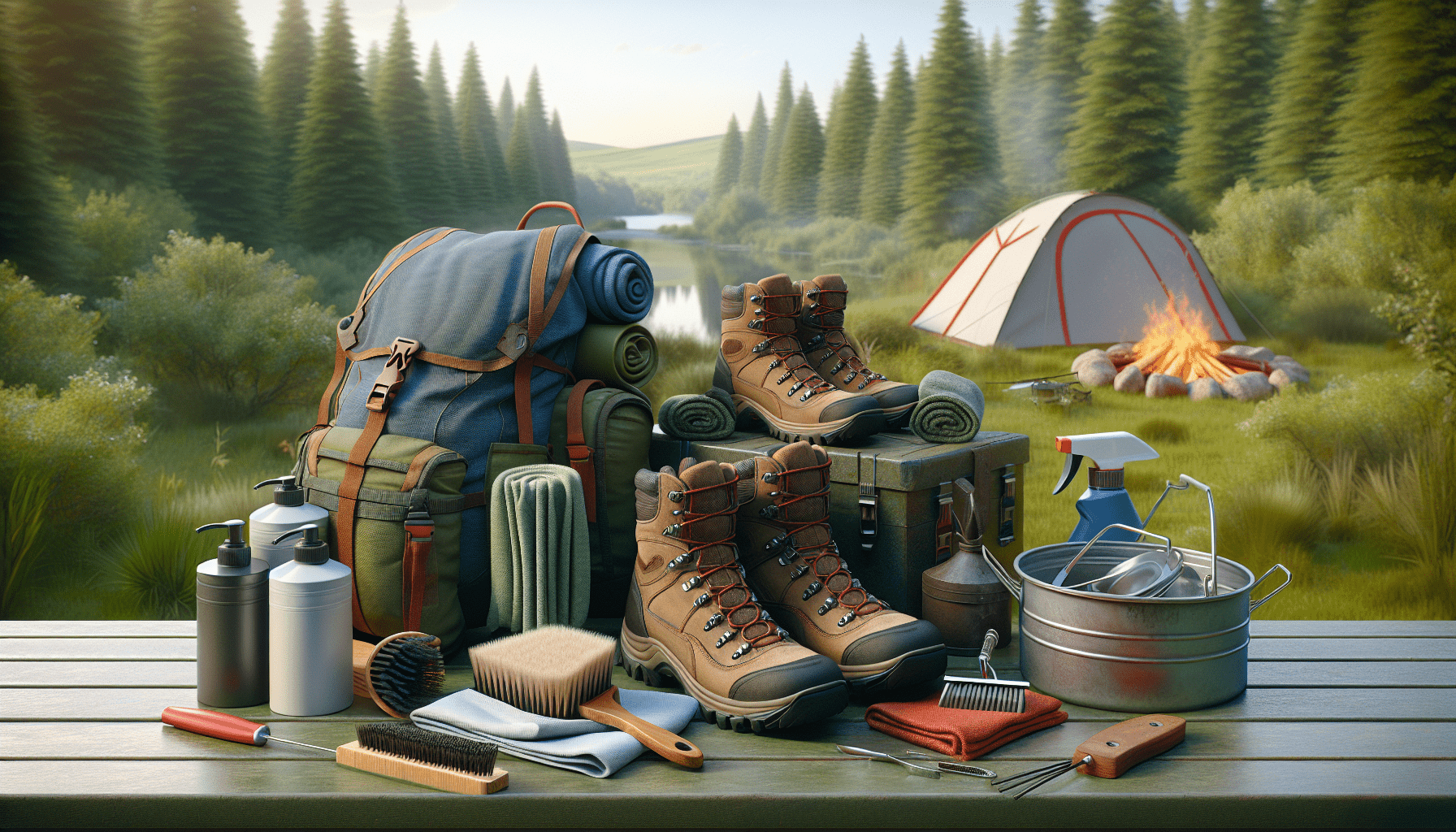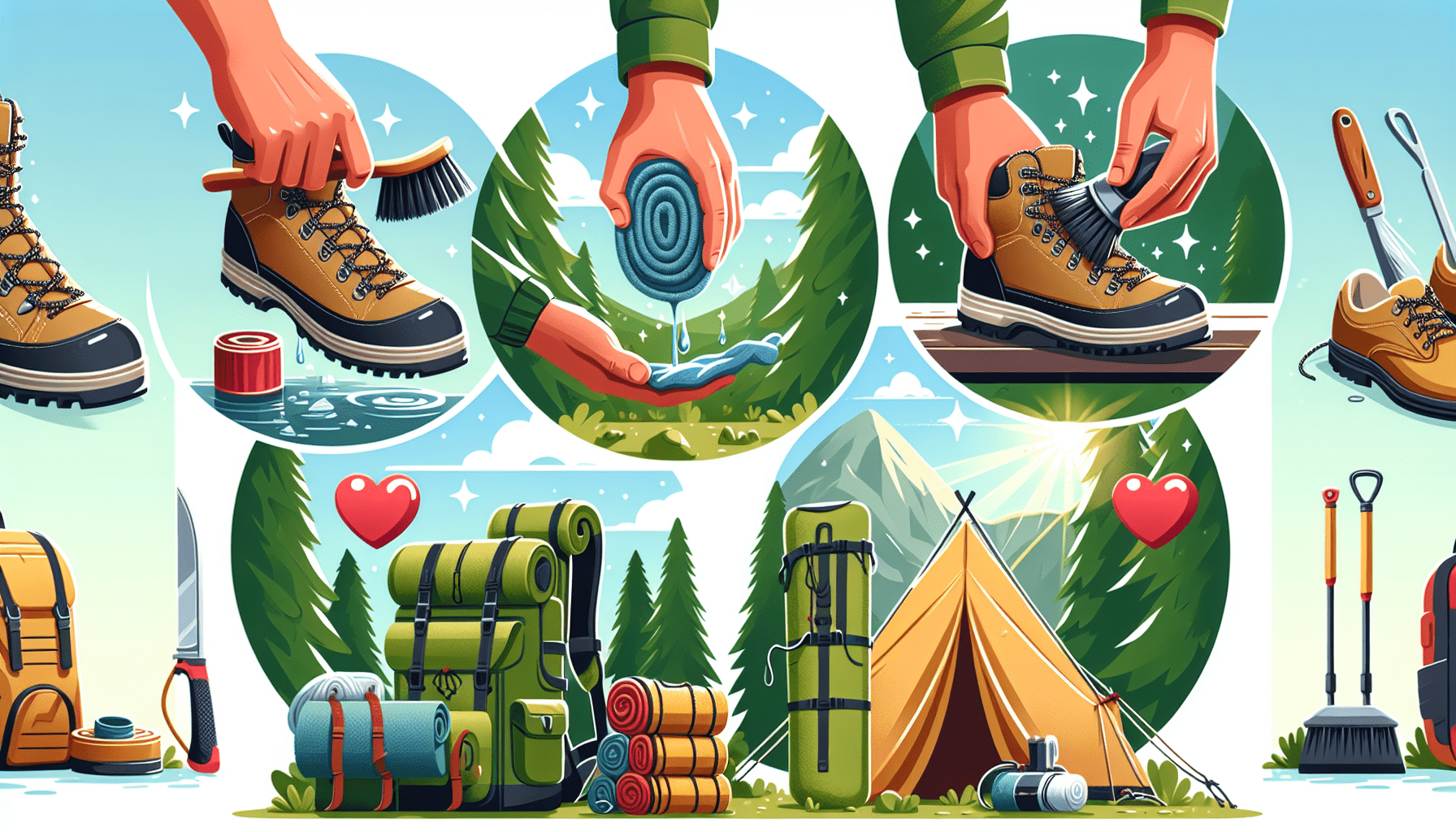So, you’ve got all your fancy outdoor gear packed and ready for your next adventure in the great outdoors. But before you hit the trails, it’s important to make sure you’re equipped with the knowledge to keep your gear in top-notch condition. In this article, we’ve compiled 10 essential tips that will help you maintain and extend the longevity of your outdoor gear. From boots to backpacks, tents to sleeping bags, we’ve got you covered on the best practices to ensure your gear stays in prime shape and is ready for countless adventures to come.

This image is property of images.pexels.com.
Clean Your Gear Regularly
Keeping your outdoor gear clean is essential for maintaining its durability and longevity. Washing your gear after each use is the first step in ensuring its cleanliness. Whether it’s your hiking boots, backpack, or tent, a thorough cleaning removes dirt, sweat, and other contaminants that can degrade the performance of your gear.
When washing your gear, be sure to follow the manufacturer’s instructions, as different materials may require specific cleaning methods. Use a gentle detergent and lukewarm water to avoid damaging the fabric or compromising any coatings. Scrubbing with a soft brush can help remove stubborn stains or dirt buildup.
Inspect and Repair Damage
Regularly inspecting your gear for wear and tear is crucial to catch any small damages before they become major issues. Check for any signs of weakness, such as frayed stitching, tears, or holes. By addressing these minor damages early on, you can prevent further deterioration and extend the lifespan of your gear.
For small damages, such as minor tears or loose threads, repairing them yourself can be a cost-effective solution. Use a repair kit that includes patches, adhesive tapes, or sewing supplies to fix these issues. However, if the damage is severe, it may be best to seek professional repair services or consider replacing the damaged parts.
Store Your Gear Properly
Proper storage is vital to protect your outdoor gear from unnecessary wear and tear. When not in use, always store your gear in a dry place. Moisture can lead to mold, mildew, and degradation of materials. Avoid basements or damp areas, and opt for a well-ventilated space.
Additionally, exposure to direct sunlight can cause fading and weakening of fabrics and coatings. Therefore, it’s essential to store your gear away from direct sunlight. Utilize storage containers or bags to keep everything organized and protected from dust, pests, and other potential damages.
Maintain Waterproofing
Maintaining the waterproofing capabilities of your gear is essential to ensure it remains effective in wet conditions. Regularly test the waterproofing by spraying water on the gear’s surface and observing if it beads up and rolls off. If the water starts to soak in, it may be time to reapply a waterproof coating.
Waterproof coatings can be applied to various gear, such as jackets or backpacks, to restore their water repellency. Follow the manufacturer’s instructions when applying the coating and allow sufficient drying time. Additionally, consider using seam sealants to reinforce the waterproofing of seams, as they are often vulnerable to water penetration.

This image is property of images.pexels.com.
Maintain Insulation
Proper care of insulation materials is crucial for maintaining the warmth and comfort provided by your gear. For synthetic insulation, regularly fluffing the fibers helps restore their loft and maximize their insulating properties. Gently shake and fluff your gear to prevent clumping and ensure adequate loftiness.
Down insulation requires special maintenance. Lofting the down by thoroughly shaking and fluffing your gear helps restore its ability to trap warm air. Inspect your gear for any cold spots, which may indicate down shifting or compressing. If you find any cold spots, distribute the down evenly by gently massaging the affected areas.
Keep Zippers and Fasteners Functioning
Functional zippers and fasteners are essential for hassle-free use of your outdoor gear. Lubricating zippers regularly with a silicone-based lubricant helps prevent them from sticking or becoming difficult to open and close. Apply a small amount of lubricant along the zipper teeth and work it in by sliding the zipper back and forth.
If your gear has broken zippers or fasteners, it’s crucial to address the issue promptly. Depending on the extent of the damage, you may be able to repair them yourself using repair kits or replace the broken components entirely. Ensure you choose high-quality replacements to maintain the gear’s overall functionality.

This image is property of images.pexels.com.
Take Care of Footwear
Properly caring for your footwear is essential to ensure their longevity and performance. After each use, clean your shoes properly by removing any dirt or debris. Use a soft brush or cloth and mild soap to gently scrub the exterior. Avoid soaking your shoes unless specifically recommended by the manufacturer.
Inspect your shoes regularly for signs of wear, such as worn-out soles, loose stitching, or damaged uppers. Replace worn-out insoles to maintain comfort and support. Applying waterproof treatments to your footwear can also help protect them from moisture and extend their lifespan.
Protect and Clean Tents
Tents provide shelter and protection during outdoor adventures, but they need proper care to ensure their longevity. Using ground sheets can help protect the tent floor from abrasive surfaces, preventing tears and punctures. Place a ground sheet under your tent before pitching it to provide an extra layer of protection.
Cleaning tent fabrics regularly helps remove dirt, stains, and mildew. Follow the manufacturer’s instructions for cleaning, as some tents may require specific methods or detergents. Avoid using harsh chemicals or abrasive tools that can damage the fabric or coatings. Repair any tears or holes promptly using repair patches or sealants.

Maintain Backpacks and Bags
Backpacks and bags are essential for carrying your gear and need regular maintenance to ensure their functionality and durability. Cleaning your backpacks regularly helps remove dirt, sweat, and odors. Use a mild detergent and lukewarm water to clean the exterior and interior. Avoid immersing the entire backpack unless recommended by the manufacturer.
Inspect the straps, buckles, and zippers for any signs of damage, such as fraying or breakage. Replace any worn-out or broken components to maintain the backpack’s strength and reliability. Additionally, organizing and decluttering your backpack regularly helps optimize its storage and makes it easier to find items when needed.
Properly Clean and Store Cooking Gear
Outdoor cooking gear, such as cast iron cookware, requires special care to maintain its longevity and cooking performance. Cleaning and seasoning cast iron cookware after each use helps prevent rust and maintain the non-stick seasoning. Scrub the cookware with a brush and mild detergent, rinse thoroughly, and dry it completely before applying a thin layer of oil.
Storing cooking gear with care is essential to protect it from damage and ensure easy access when needed. Stack pots and pans with paper towels or cloth between them to prevent scratches and dents. Store sharp utensils separately to avoid accidents or damage to other items. Regularly inspect and replace any damaged cooking gear to maintain safety and efficiency.
By following these essential tips for outdoor gear maintenance, you can prolong the lifespan of your equipment and ensure optimal performance during your outdoor adventures. Taking the time to clean, inspect, repair, and store your gear properly will not only save you money in the long run but also enhance your overall outdoor experience. So, make it a habit to care for your gear regularly and enjoy many more successful and enjoyable outdoor endeavors.


